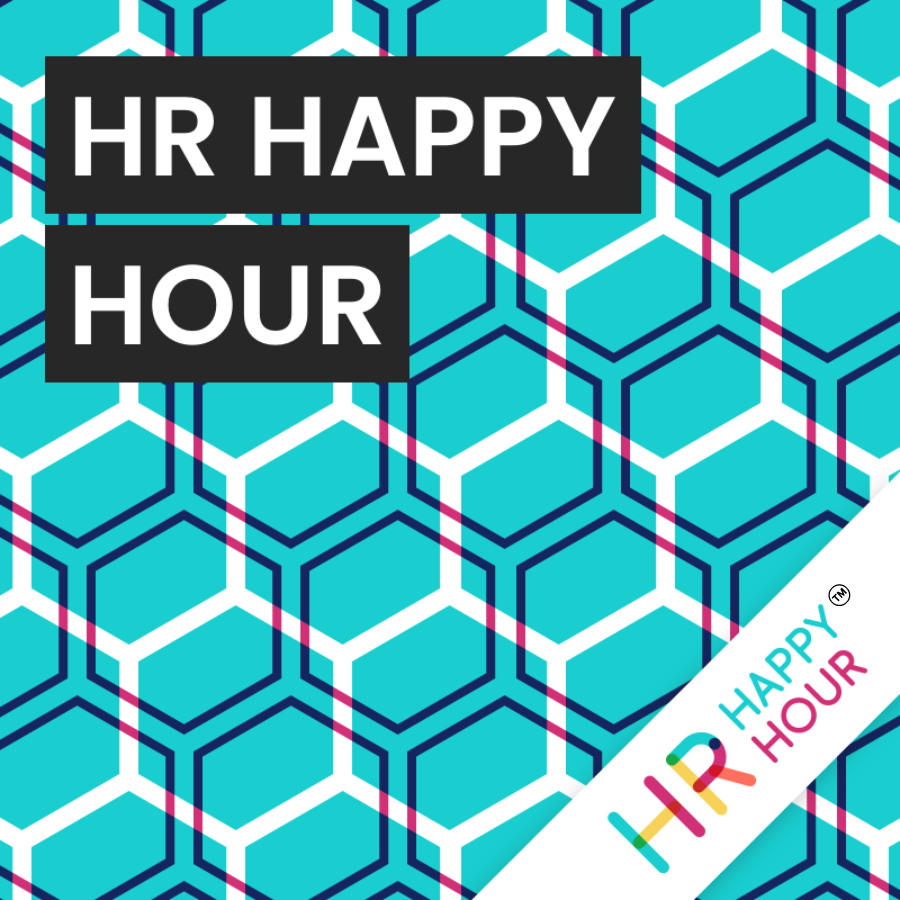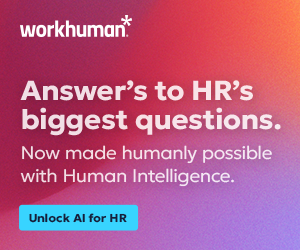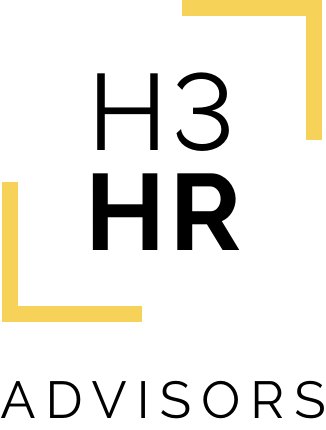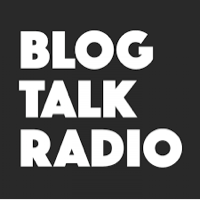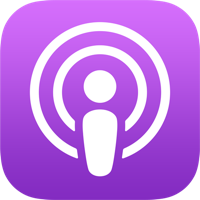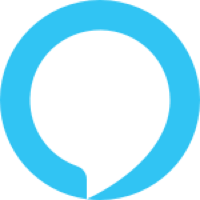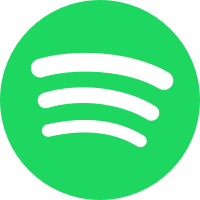Strategies for Reducing Employee Burnout and Supporting Mental Well-being
Hosted by

Steve Boese
Co-Founder and Chief Data Officer of H3 HR Advisors and Program Chair, HR Technology Conference

Trish Steed
Co- Founder and Chief Strategy Officer, H3 HR Advisors
About this episode
Strategies for Reducing Employee Burnout and Supporting Mental Well-being
Hosts: Steve Boese, Trish Steed
Guest: Dr. Belinda Carrasco, Clinical Director, Koa Health
Today, we spoke with Dr. Belinda Carrasco from Koa Health about how work-related stress leads to burnout and how to prevent it. We discussed how to foster a positive work environment by training leaders who are able to demonstrate empathy, compassion, and practical communication skills. Trish and Steve shared their personal journeys with stress and burnout through their career as well as ideas on how to work through it. Belinda described Koa Health’s prevention first approach that provides the tools necessary to normalize mental health conversations and help employees manage stressors more effectively. We explored how providing care pathways can help normalize conversations around self-care and make employees better at work and in life – and more!
Make sure to check out the following resources on workplace mental health.
Thank you for joining the show today! Remember to subscribe wherever you get your podcasts!
Transcript follows:
Steve 0:27
Welcome back to the HR Happy Hour show. My name is Steve Boese. It’s so great to be with you. I’m joined by Trish Steed, of course, Trish, how are you?
Trish 0:33
I’m fantastic. How are you today?
Steve 0:35
I am well. I’m very excited for today’s show. It’s going to be meaty, interesting, impactful, I feel like I’ll take away some personal learnings from this myself, right? Because we’re talking about stress and burnout and well being which so many employees face the issues around just being stressed being burned out, being just worn out, honestly. And I know the pandemic is over. But I feel like there’s lingering stress and burnout and just issues in the workplace. So I don’t know if you feel that Trish, I still do.
Trish 1:10
Yeah, selfishly. I mean, we do a lot of shows on different topics. This one really hits home for me too. I think just that idea of we are through the pandemic, it’s time to get back to work and really dive into things. But yeah, what I’m really most excited about is that we’re talking about this more than ever before. It’s a much more open discussion in workplaces on how people are really truly feeling. And even in our workplace with you and I feel much more empowered to say when I might be having a little bit of a day where I feel a little worn out. And so I think that’s it’s a good thing, actually that we’re talking about it so really excited to have an expert come in and not just someone like me complaining about feeling exhausted, but yeah.
Steve 1:55
Maybe so. Let’s try to get some help maybe for us as well. It’s gonna help. Welcome our guest today. Our guest is Dr. Belinda Carrasco. She’s a clinical psychologist with over 20 years of experience and strategy, clinical operations, design, implementation and execution of clinical programming and digital evidence based solutions. In our work at COA health while working in public health, Belinda strove to improve access to mental health care in underserved communities. Belinda, welcome to the show. How are you today?
Dr. Belinda Carrasco 2:25
I am so pleased to be here. Thank you so much for having me. And I am thrilled to have a conversation around wellbeing and burnout in the workplace. Yeah, thank you for it.
Steve 2:38
Thank you. Again, it’s such an important topic that’s so many more we have some data to we can talk about a little bit about the percentage of employees and inside organizations that are impacted by this. Before we dive into burnout, and well being let’s maybe just learn a little bit more about you, Belinda. If I were a doctor, Belinda, I’d make everyone call me Doctor. I hope that’s okay I just called you Belinda. But tell us a little bit more about you. And then sort of how you came into the work, you’re doing a Koa Health?
Dr. Belinda Carrasco 3:09
Absolutely. Well, as mentioned, I’m a clinical psychologist, I’m a clinician and still do clinical work, which I think it’s important to the work that I do physical health. But I started working in public health care system in Mexico. So I did that for a number of years. And then a job took me to New York, where I worked for two big healthcare systems. So this was in New York Presbyterian Columbia University Medical Center, and then NYU. And part of the work that I was doing there was supporting adults presenting with a myriad of stress, work stress related issues. And that really led me to think, as to well, treating all these individuals helping them, but am I really solving sort of the problem, right? Are we really sort of digging deep in understanding what’s causing these issues, not just taking an approach of, you know, just reading them when people are really stressed out, and they come to see you as a clinician. So my work pivoted a little bit into work place well being. And I’ve been doing that for a number of years, especially in the technology space, where you can get really innovative as to how to implement and strategize all these initiatives in that just improving the work life balance of people. And I think that’s really what we’re striving to do at Koa Health, through innovation through technology. And I think very importantly, this is very dear to me, with the help of real sort of experts and with evidence backed solutions.
Trish 4:49
Yeah, what an exciting background. I mean, I love that you’ve got sort of a perspective that’s more global. And, you know, so you’re bringing that wealth of experience and knowledge into what you’re doing at Koa. One thing I know Steve mentioned, we obviously have a lot of data we’re going to dig into here. And we will connect everyone with Koa Health at the end and through the show notes. But could you maybe spend just a moment or two and talking about some of those specific ways that your clients are working with Koa Health in the ways that they can work with you if they’re not familiar with Koa Health?
Dr. Belinda Carrasco 5:24
I mean, absolutely. Well, first of all, Koa Health really aims at democratizing access to care, right? We know that access to care has sort of improved since the pandemic, but the reality is, is that still about eight out of 10, people don’t ask for help when they need it. And if you look at the data, there’s about a 10 year delay to care in the Global North. So we’re not talking about then 10 years. So meaning that people sometimes wait up to 10 years to get help when they start feeling anxious or depressed. I’m tremendous.
Steve 6:02
I believe that honestly. And I’m not saying this as a joke, I should have been in therapy more than 10 years ago. I’ll let you know, I’m doing some things now. And I just as a personal just normal human, I’m not not normal. But it sounds crazy, Belinda, but I think about my own life, my own experience, like I should have been seeking some help years ago, I think.
Dr. Belinda Carrasco 6:25
You know, and that’s very common. If you think about it, there’s still tremendous stigma around asking for help, and certainly in the workplace, that’s something that people are not comfortable doing. And this is, I think, where our sort of work, Koa Health is so incredibly important, because we’re trying, again, to create solutions, not just to provide a benefit, not just provide counseling, but really an opportunity for people to think holistically and comprehensively about mental health, with an emphasis on prevention. Which for me, for instance, declination is so important, working in healthcare systems, you tend to sort of see things from a public health background, right? Is that not just let’s treat people give rounds of psychotherapy, or try to get people better, but what’s making them sick? Right? I mean, what’s sort of the cause? What’s driving, in this case, workplace burnout? And with innovation and technology, that is something that can be that can be addressed very effectively.
Trish 7:29
Yeah, I like that you were talking about how it’s not just about providing counseling opportunities for your workforce, it is about that stigma. And, Steve, I think you bring up a good point. I also recently started therapy for a whole different reason around migraines I was having and I didn’t realize that was manifestation of this feeling of burnout and overload and not knowing how to handle it, and also hormones and aging and right, all the things. I liked that when you are talking about working with telehealth, it’s also about bridging kind of that gap. So that, you know, look, as leaders, we’re struggling with these things ourselves. And yet, we also have to help our employees, right? Or if you’re in human resources, or maybe the C suite, you also not only have to deal with your own and your immediate teams, but your entire company. What kind of feedback are you getting around? I know you mentioned, you know, 80% of people not asking for help. How big is the problem of burnout?
Dr. Belinda Carrasco 8:33
Yeah, yeah. I mean, absolutely. When you sort of look, I mean, a lot of people have done surveys and studies. But there’s a recent one from McKinsey that show that about one quarter of employees, were endorsing burnout symptoms. But there are other sources, like the American Psychological Association, very recently started to look very closely at workplace wellbeing and burnout and what they found in the recent surveys, about 70% of people were reporting pretty significant stress related to work. So that is tremendous, right? If you sort of look at and we can talk about sort of data, because it’s so incredibly, you know, it’s mind blowing, that what people say is that people are stressed out, we know that we spend a lot of time at work, oftentimes more time at work that when family members and when our partners with our children with our friends, right. And you know, what people are saying is consistent with that is that sometimes, for instance, you’re talking about leaders. You know, there’s some reports, I think this was reported by Forbes, that people are saying that their relationship with their manager affects them as much as a relationship with their partner, and even sort of more than their doctor or their therapists. So this to say that really what we live through right in the workplace really affects who we are and how we feel and how we live in the world, really. So I’m glad that you were talking about leaders and HR partners, because really, you know, when we think about burnout, we have to think about solution as a collective right? How do we all come together to ensure that this is a problem that gets tackled? Effectively?
Steve 10:25
Yeah, yeah. Belinda, I think it’s interesting to taking a look at these problems of stress and burnout from an employer perspective. And organizational perspective, is really interesting, because I think maybe if I, like if I if you look back, when you’re doing your work as a clinician, just seeing individuals who just turn up and need care, and you’re trying to figure out what’s going on with them, and trying to figure out how to help them sort of one at a time, right? When you’re working with organizations, everybody’s different, and has their unique story and their set of challenges. But they do have one big thing in common, right, which is they all work for the same organization, which has got its culture and its norms, and its philosophies around, you know, work life balance and deadlines and maybe overwork or who knows all the things right, that contribute to stress, which leads to burnout, right? So are there ways then by looking at it more broadly, that you and the team there can help an organization tackle some of the problems that come across a a larger population of individuals?
Dr. Belinda Carrasco 11:34
Absolutely, this is just so important. I think that that’s what we’re trying to, you know, do strive to do a Koa Health is thinking again, about sort of innovation and thinking about health and mental health in a continuum, right, sort of in a way that’s comprehensive, that it’s tailored, and it’s personalized, meaning that there’s no like one unique, one size fits all situation, but that we’re really trying to counsel employers to think about solutions that are tailored to their employees. So we’re trying to think outside the box, and not say, Hey, this is really good benefit that you can offer your employees, which is, let’s say successions of castling, which that’s really important. I mean, that’s a really great benefit. And you get the numbers, especially millennials and Gen z’s, they say when they look for a job, they are looking for mental health benefits, right. So that’s on top of mind for people. But if you sort of think what what Steve was saying, you know, sort of larger sort of picture, we also want to sort of make sure that we support organizations to provide ample opportunities for people to take care of themselves, but also sort of have the agency to do this in a numerous of ways. And, and as I was saying, including prevention.
Dr. Belinda Carrasco 12:55
So part of our solutions at Koa Health is a prevention first approach is that we try to emphasize the fact that a lot of the work can be done before people get burned out, right? And so you can work on your mental health on your well being on an everyday basis without having to go to therapy. Right? You know, not everyone needs therapy, right? Not everyone is appropriate for therapy. But there are solutions aim that at really sort of fostering well being and preventative care. And we did that you think about it with exercise with nutrition that sometimes so part of our lives, why are we not doing that with mental health? And that’s part of what we’re trying to introduce at Koa, this continuum of care, right? So it was this way of seeing employee Well, being holistically, not just, you know, someone is struggling, let’s give them counseling is really, you know, supporting leaders, HR partners, you know, assisting managers with training to ensure that they can have conversations around mental health. It’s a package right. And, as I mentioned, there needs to be a sense of collective to make this work.
Trish 14:13
I love those examples, Belinda, because I feel like in positions I’ve held before working, you know, in my own company with Steve, they were much larger companies. And I think there was always a hesitancy around, even if you had programs or benefits in place, as you mentioned, you can have if you don’t know how to have those conversations, to even tell your employees or your colleagues or maybe your boss about right because bosses struggle to it’s without that conversational piece. I think there’s, you know, a big barrier there. So I like that that’s something that you’re helping, not just leaders with, but the employees themselves be able to just say what they need, ask for it. I do have one question I’ve been really curious about over the yours when it comes to stress, I’ll give a little example and then get to the question.
Trish 15:05
So when I had my twins 20 years ago, they were in the NICU for a couple of weeks, nothing too serious, but just you know, they were a little early. And I remember a nurse NICU nurse telling me that it doesn’t matter if it’s good stress or bad stress that your body, their little bodies could react in the same way. So for example, we were talking about like overstimulation or whatever. That’s always stuck with me. And my question for you is, there are many things in the workplace specifically which which are good. Maybe it’s a big, exciting project? Or, you know, I don’t know, you’re recently promoted? Our do our bodies respond to both those good stresses at work in a very similar way? Or is that not really the case? Like, can we actually get burnout? Consequences or results from sort of good stress? Is that a thing?
Dr. Belinda Carrasco 16:01
This is such an excellent question, right? Because I think that that sort of poses a question of, well, we as human beings, we are wired to feel stress and experiencing anxiety, right? If you think about it, from an evolutionary perspective, we need that in order to respond in the context of the threat, right? That if we see that there is something dangerous, that we can say, hey, I need to get out of here. So the fight or flight system gets activated. And in fact, if you look at sort of evidence, if you look at data, you need a little bit of stress to be able to perform well. There’s something that’s called the Datsun Jags bell curve. And what that sort of shows is that enough sort of stress and not sort of feeling fire under your feet is good for performance, right? Because, you know, if I was not a little bit stressed about being here on time, perhaps I wouldn’t be here on time, right? So we need a little bit of that kind of push to be able to get things done. However, when that sort of stress becomes unmanageable, and in particular, our coping strategies, sale, right? When we’re unable to have a sense of agency or mastery, when the stress system gets overwhelmed. That’s when we encounter problems, right. So it’s, so it’s a fine line, right? So I would sort of say, yes, sometimes the brain does not discriminate is true. But it’s all about do we have enough coping mechanisms. And we have I think agency is so important when we think about stress. And by the way that applies in the workplace, as well, one of one of the big Protective Factors against work. Place burnout is a sense of control and agency that you have over your job and sense of purpose. So that’s a huge protective factor. And that applies for other stressors as well. So today, I loved your your question, because it’s so on point, and, you know, we feel sort of stressed often, right, I mean, that’s part sometimes of daily life.
Steve 18:07
Yeah, and I think that’s a fair point, too. Because I don’t think we’re when we’re talking about stress and burnout and mental health in the workplace. I don’t think we’re anyone really, and correct me if I’m wrong, Belinda, like, we’re trying to say there should be no stress at work, right. Like, that’s sort of unrealistic, honestly. But also, as you pointed out, in your example, interests question as well and her example, so a little bit of stress is beneficial, right, it helps us, you know, be motivated, get them get things done, be more efficient, be contribute to the team and all the things. So it’s really finding that balance, right? Because I feel like there’s been a couple of workplaces I’ve existed in in my lifetime, not not my current one, where, like, I felt pretty healthy and pretty, pretty solid going in. Now, by the time I left, I had been kind of overstressed if let’s just say it that way to put it kindly. So really finding that finding that level, I was reading something this morning, oddly enough, not even necessarily in prep for the show, but I just happened to come across it. And it was about Finland, and people in Finland, because Finland apparently every year is rated as the happiest country in the world. I don’t know if you’ve heard of this, like and so this particular article was written by a CEO or an entrepreneur in Finland, and he was talking about one of the reasons at least this person felt like they are happier there is has to do with work in as much as the work climate is they want to succeed and they want to achieve and they’re there sort of to do great things, but it’s not. It’s not as cutthroat. It’s not as competitive. It’s not, you know, sort of climbing over other people on your way to the top kind of thing and I feel like here in the US, there’s a lot of that in workplaces both in how companies sort of compete with their competitors, but also how people sort of inside organizations sometimes compete. And again, every organization is different. I know I’ve been in a couple that were more like the latter where it was. We were all sort of, yeah, we’re all working together. But we’re all competing for our little piece of the pie. So it’s a long winded way of asking this question, Belinda, which is, how much can a culture of an organization be exposed? Or can can leaders realize, hey, it’s the culture here at this organization that’s leading to some of these problems that we’re experiencing with stress burnout, and potentially even retention? Is that a hard thing to do with organization?
Dr. Belinda Carrasco 20:47
No, I think that this is actually a brilliant question. Because most people think about burnout as an individual problem, right? And you sort of say, well, you’re burned out you individual, you employ your staff member to do something about it, right. And oftentimes, burnout is an organizational problem, it’s sort of a bigger sort of problem, right? That sort of require changes in policies, guidelines. And in particular, something that you were referring to is interpersonal relationships. Like, if you look at data, one of the biggest drivers for workplace burnout is toxic relationships. So toxic workplace, right. And that’s a big one that’s sort of above, I’m working 12 hours a day, or I have a lot to do or have a lot of responsibilities, relationships plays such an important role. And I think that’s where culture comes in, right, is that if you have an organization that promotes psychological safety means that people are free to make mistakes, to take risks, right, that trust one another. You know, even if people are working pretty hard, they’re more likely to be less stressed out and experience workplace burnout. Now, of course, right? I mean, that’s a really sort of tough nut to crack, right? Because you’re talking about organizational change and workplace culture.
Dr. Belinda Carrasco 22:03
But there’s individuals and organizations can do sort of a lot to help employees with coping enhancement. And what I mean by company enhancement is that there’s certain things that you can necessarily sort of change right away, right, as as an organization, but tools that you can give your, your staff, your employees to, so they can actually manage some of these situations better. So sort of telling you one of the things that we do our core health, I was thinking about how we offer this continuum of of care, right, especially the piece of prevention, we have a prevention pathway that encompasses pretty much is coping enhancement. So how do you sort of, you know, pretty much deal with stressors in a much more effective way. So we offer activities such as, like mindfulness, or cognitive restructuring, or opportunities to do breath work, right. And all of these are evidence based solutions that can help sort of in I’m not going to change the culture, but certainly coping enhancement goes a long way, as an individual, and when you’re giving that as an organization, I think that you’re also sending the message that, you know, that there’s a need sort of for for self care, and, and again, for prevention is important, right, sort of tackling the problems before they become problems, is just so so important. And it is part of an organizational, you know, I would sort of say, like important pillar when when you’re addressing workplace burnout.
Trish 23:37
I love that idea of the coping skills, right? Because even if you think you have coping skills, I’m learning and maybe Steve, you’re saying you’re going to therapy now, too. I think that you don’t even know what you don’t know, when it comes to ways to cope that is effective and proven and research based. One of the things I have a question for you about because I think it applies to the workplace, and specifically some of the trends that you all are researching at Koa Health is when I started therapy, as I mentioned, it was specifically for pain management is related to migraines being kind of the the big problem, if you will. And I remember at one point, the therapist talked about anticipatory pain. And so not only am I experiencing pain, but when you’re having migraines, more than you know, 15 days a month. It’s like I would stop doing certain things or making certain plans because I was anticipating having a migraine before even had it. And my question for you is this I know that there was some information, you know, that we kind of received from you all before this, this recording and it talked about I’m going to read a little bit here over 70% of millennials and Gen Z Report. Their concern about mental health causes them stress and anxiety. But yeah, they’re not using the resources that are being offered. I’d love to hear your perspective and dive in on that a little bit like, are we? are we anticipating burnout even more than we’re actually burned out? Is that a thing? Or? I don’t know, I don’t know, where are we in this on the continuum?
Dr. Belinda Carrasco 25:19
Definitely, I think what you’re describing is something about anxiety, it’s called anticipatory anxiety, that is a real thing. And in fact, for instance, is a major driver for insomnia is sort of the fear that you’re not going to be able to sleep and therefore you don’t sleep, that applies the same for pain. So it’s actually a sort of thing. And it’s a mechanism of avoidance, and generally avoidance, drives anxiety down in the short run, right, because you’re kind of like pulling yourself away from something that might be painful, or might cause you distress. But in the long run, you don’t learn anything new, you don’t learn that perhaps you can sort of be in a place where actually the pain was not that bad, or you were able to sleep, but then sufficient makes things so much worse. So avoidance is a key piece or thinking about coping enhancement. And a sort of, to going back to your point of millennials sort of wanting benefits, but sometimes they’re just not accessing them. Right. And I think that there’s, again, a lot of sort of avoidance driven by stigma, but oftentimes just not sort of knowing how to get to the right place, right, how to access the right care, the right tool, what’s best for me, right, what would be appropriate. And, and, you know, going back to, what would try to sort of do a ko health is sort of ensure that we are giving the right care pathway, right? To the individual based on where they are at knowing that people are different, not everyone needs therapy.
Dr. Belinda Carrasco 26:55
But some people will need more of a preventative pathway, right? Instead of like understanding of how do we sort of ensure that we get to sort of tell you, hey, based on this assessment, based on evidence based measures, this is where you need to go, right, so you don’t need to decide and sort of try to figure out this maze of the healthcare system that is that we’re, you know, faced with, and sort of based on sort of your profile based on sort of data, this is where you can get sort of the resource and perhaps get to feel better right away. So there’s an element of choice. But there’s also an element of, you know, being sort of able to use data and to use really good assessments, to signal or to sort of tell people where to sort of go, because the right care, at the right time, is so important for people to actually stick through it. As a clinician, worst thing that I saw oftentimes in big healthcare systems is that people were referred to levels of care that were not appropriate. And what that ended up sort of causing is that people then wouldn’t stick to treatment, so they would drop out. And then they wouldn’t get the care that they needed, for instance, the emergency room, right, you’re not feeling well go to the emergency room, that’s not an appropriate level of care, that just creates a lot of problems for the institution of an individual. So really, what we’re trying to sort of do with technology, go health, is being able to stratify to really sort of indicate just based on your profile based on all these data points. This is where you can get resources, get care or get help or coping enhancement fast.
Trish 28:37
Yeah, as you were talking, I’m sitting there picturing like spending, you know, most of my career in HR, and we talked so much with people about their career path, right? And all of the things that come with that, including stress, as you’re sort of moving along that continuum of recommendations of should you go for a promotion, or maybe a lateral move, right? To me, it feels like it just makes sense, to partner with Koa Health because then you’re also supplementing that career pathway with a care pathway that supports right along every step. And that may be gets to that idea of having it be something you’re doing before there’s a problem. If you’re I don’t know, is that true? If I’m the leader, and I’m thinking like, Oh, before I promote Jane Doe into this role, here is the appropriate care pathway recommendation is what right, does that? Is that how it works? Or no? Am I just dreaming this up?
Dr. Belinda Carrasco 29:36
No, I mean, I think that’s what you’re really suggesting, right? It’s anticipating that there are sort of, you know, in the employee lifecycle and in place that are the journey, right? There are moments where there’s more duress, right, promotion or departure. And if you anticipate that perhaps is just going to be stressful and you provide that support for the employee that is helping And then what sort of their, as you were saying with their sort of journey, their professional journey? So no, I think that these two things go hand in hand. And I think that it also normalizes a conversation around, just being able to take good care of yourself. And that makes you better at work. And I think better in life, you know, of course, I’m biased. I’m a psychologist. But I really think that is true.
Trish 30:21
It sounds like less of a stigma, the way you put that it’s just it clicked with me, I thought, I could see myself saying that to an employee or to a leader very easily to make it seem like, Oh, this isn’t someone who has a problem we’re trying to fix. This is just we’re here to support and care for you all along your career path. And your care journey is the means to make sure that happens in a more personalized way for each individual. Right? I get it, it clicks, you make sense of that.
Steve 30:54
You know, for me, as we as I think back on, you know, the few conversations we’ve had on this show, with our friends at Koa Health and some other shows that we’ve done in the last year or so. To me, the thing that really stands out, it’s really crystallized here in today’s show, too, is why working with an organization like Koa Health makes so much sense for organizations because it for me, it seems like it really does two things, it does more than two, I’m sure but two that really stood out to me. One is to think about these problems, and think about the work environment and think about the work culture, think about the importance of managers and equipping them with the tools that they need holistically right across the organization. Right. And not just the typical ways that we’ve experienced mental health care through our workplaces in the past, which is EAP is primarily or just carve outs right in our medical plan, which might call for X number of mental health kind of visits or whatnot, which are all reactive is blended made this point a couple of times today, they’re very reactive. Oh, this person has finally got to their breaking point where they’re willing to raise their hand and say, I’ve got a problem. Okay, and then we throw some care at them and hope for the best, right? But not at all getting into why it’s happening. And maybe we can find ways to prevent it. So to me, the two things right, the holistic lens, the organizational wide, wide approach to these problems, and then secondarily, providing employees resources, preventative cares, Belinda said, prevention emphasis, I wrote that down. You said that earlier and sort of thinking about this, like we think about other other challenges, right? Whether it’s career planning, which is very proactive, right, and things like that. So those are my takeaways, I’m sure there’s more, but I just wish organizations I worked with in the past, especially that one, some access to these kinds of tools, because it would have helped not just me, but certainly all the folks I work with who I who I liked and cared about. And I felt like we were all struggling. So Belinda is nodding a little bit. Maybe you’ve run into this to some of the organizations you work with and helped over the years.
Dr. Belinda Carrasco 33:05
I mean, I think that absolutely, I thought that was such a wonderful summary, right, is that you’re really sort of trying to streamline care, provide ample opportunities for people to get help. And also just normalizing having a conversation around mental health in a way that like, you know, trying to think about mental health parity, right. With physical health, we’re often not sort of shy about saying, Hey, I’m sort of dieting where I’m exercising, or I’m going to the gym before work. Can we sort of do the same for mental health? And can organizations have the same conversations when it comes to when it comes to mental health, right emotional health, which is equally important and goes hand in hand with physical health? I mean, we know that there’s evidence for that.
Steve 33:58
Great stuff. I think that this has been a fantastic conversation. I don’t know. I had one more question. I might save it for the next time. Maybe we can get to meet with Belinda. I think it’s phenomenal that we’re able to sort of bring more attention to the problem, which we’ve known about for a long time. But the resources and the tools and the support from organizations like Koa are there now. And they didn’t used to be there. And they’re there today and I think organizations really take some time to think about how they’re approaching their mental health challenges, because you know, they’re there in your workplace.
Trish 34:36
I would say you know, again, as you were talking, Belinda, there were so many times. I mean, I spent so many years working in HR as a leader and running our entire benefit strategy and programs and making decisions and I’m not saying I did a poor job at that, but wow, if I had had a partner to come in, and even just in this short conversation, I’ve literally made a whole page took notes of things I’ve learned from you in one conversation. So I think if you know, if you’re a leader out there, and you’re just thinking, either I don’t know what to do, I don’t know what my next steps are, please, please reach out to Koa, we’ll provide all of the ways to connect to you on LinkedIn, and both to you know, Koa online and some really interesting articles and resources around managing stress in the workplace and preventing burnout. But I think that alone demonstrates that you can be an HR for a very long time, or be a leader for a long time and still need assistance and support and you can learn.
Steve 35:39
And don’t, don’t just rely on your EAP, or your Blue Cross Blue Shield plan, you know, they’re great people for what they do and call them when you need, you know, when you’ve got a strep throat work with them, but work with the experts on these things. That’s that’s kind of how I feel.
Trish 35:54
Well, the fact that you’re working with so many different organizations, at Koa Health, you’re bringing a different level of perspective than what me as a sole practitioner, can possibly have.
Steve 36:07
Great stuff. It’s been so great to meet you and chat with you today. Any last words from you, before we let you go and get back to the important work that you guys are doing?
Dr. Belinda Carrasco 36:17
I mean, I think first of all, thank you for this wonderful time. This is a really wonderful conversation. I enjoyed it so much. But just to piggyback into what Trish was saying is I call we want to make sure that we’re strategic partners with organizations that we work with. I mean, I think that is number one is that, as you said, we were thought partners, and at least what I, what drove me to call, right is that we just don’t have the leverage of technological expertise and the research expertise, but also the clinical expertise. So within the team, right, it’s a multidisciplinary group of people that brings a wealth of experience and knowledge and I think that gets translated to the organizations that we work with. So those strategic partnerships, really, you know, get that sort of benefit of us of that multidisciplinary expertise. So it was really great talking to you.
Trish 37:18
Thank you for coming on and just sharing and opening our eyes and our ears and our minds to what’s even possible. Steve, I know you’ve probably heard me say over the years we’ve known each other that there were always when I was sort of in that fire mode there’s the must haves and the nice to have this falls into the must have category easily right that’s investing in the wellbeing of employees.
Steve 37:42
It’s always going to pay off. It’s the right thing to do for your business for sure. And so, I hope we help make more of those points today. That connection cuz yeah, for sure. This has been great conversation, we’ll put some links in the show notes to connect with Belinda at Koa Health. Of course, Koa has great resources on managing stress in the workplace, preventing workplace burnout and of course you can engage with with the folks there as well. We highly recommend that.
Steve 38:13
Trish, great stuff. Thank you. Good to see you. And I’ll say I have one more question for Belinda. I’ll ask her after the show because too embarrassing to ask on the show. My name is Steve Boese, thank you so much for listening to the show. It’s been the HR Happy Hour Show, check out all the show archives at HRHappyHour.net And we will see you next time and bye for now.
Transcribed by https://otter.ai
Talk to us
If you want to know more about any aspect of HR Happy Hour Media Network, or if you want to find out more about a show topic, then get in touch.

